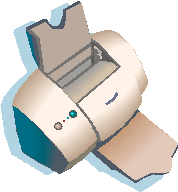|
|
Big Daddy's Kitchen |
| Big Daddy's Cooking with Attitude |
|
![]()
 Printer Friendly |
Simon Stevenson's Marvelously Flaky Pie Crust This wonderful pie crust was taught to darling daughter #2 and myself in Simon's Pie Baking class. It has never failed to draw rave reviews. Simon is now a pastry instructor at the Connecticut Culinary Institute. This recipe makes 3 8" crusts or 2 generous 9" crusts.
Measure and sift the flour into a large mixing bowl. Add the sugar, salt and DMS if using. Break the shortening by hand into the flour without squishing the shortening and flour together. Over working the flour and shortening will destroy the flakiness of the crust. Alternately you may pulse in a food processor. You want to wind up with pieces of shortening of a size somewhere between a pea and a marble. These pieces of shortening will release gases as the crust bakes and form pockets that cause the crust to be very flaky. Add in the water in stages incorporating it into the flour mixture until the mixture becomes sticky and you begin to see moist clumps of dough. Do not overwork the dough. Bring dough together into a loose ball. Cut into thirds for 8" crusts or in half for larger crusts. Gently mold each into a loose disk, wrap in plastic and place in fridge to rest and cool for one hour. Lightly flour a work surface and the dough (too much flour will toughen pastry dough.) Beginning in the middle of the dough ball roll out to edge, then from the center roll in the opposite direction. Turn the rolling pin 90 degrees and repeat adding a bit of flour if needed. Keep alternating on all 8 points of the compass until you have a circular pie shell about 12-13" in diameter and 1/8" thick. Gently working your fingers under the dough lift one half and fold it back over forming a half moon. Carefully the pastry over the pie pan with the straight edge lying across the middle of the plate. Don't attempt to mold the pastry shell into the plate with fingers. Rather, pick up the pie plate a little off the table and drop it back down. Rotate the plate and repeat until the dough settles and molds itself into shape. Trim the edge of the dough and set the pie plate in the fridge to rest for at least 1/2 hour before using.
|
![]()
© Copyright Big Daddy's Kitchen 1994 - 2024